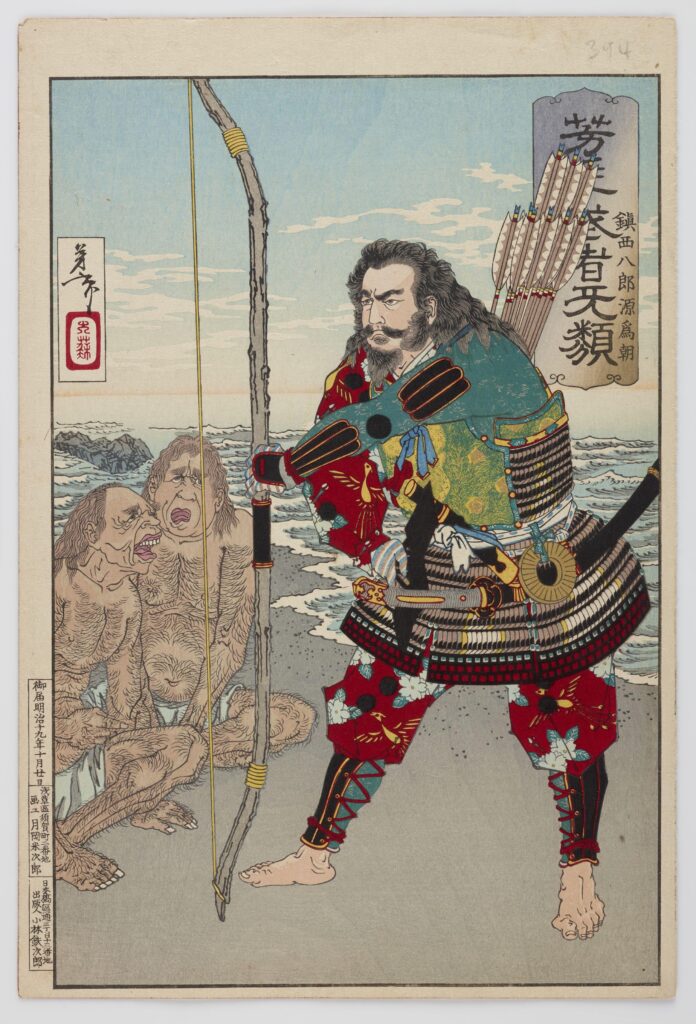Peace to War- a representation of masculinity from the mid-end Heian Period

This painting by Yashima Gakutei (1786?-1868) depicts famous calligrapher Ono no Tofu (894-966). Following the end of the Nara period Japan transformed into what is considered their last “golden age” which is known as the Heian Age. During this period the Fujiwara Clan “succeeded in dominating the royal family by marrying female clan members to emperors and then ruling on behalf of the offspring of these unions when they assumed the throne”. (Metropolitan Museum of Art 2002) The Fujiwara clan led unopposed and under their rule Japan began a new golden age with buddhist influence which gave a new aspect to beauty and elegance. Ono No Tofu was born 100 years into the Heian period and is known for his role as a calligrapher. This art-form was prominent during the Heian period as the courtly class “placed high value on beauty, elegance, and proper manners”. (Metropolitan Museum of Art 2002) Masculinity in this image is defined more by one’s manners compared to strength. There is no distinction of muscles or “manly” features but rather on what the Ono no Tofu is doing. At the end of the Heian period showing strength would be the source of power as samurai increased and into the eventual Shogunate period. -This was written by Drew O’Connell
Metropolitan Museum of Art . 2002. “Heian Period (794–1185).” Metmuseum.org. Department of Asian Art. October 2002. https://www.metmuseum.org/toah/hd/heia/hd_heia.htm#:~:text=The%20new%20capital%20was%20established,member%20of%20the%20Fujiwara%20clan..

This painting by Yashima Gakutei (1786?-1868) depicts famous calligrapher Ono no Tofu (894-966). Following the end of the Nara period Japan transformed into what is considered their last “golden age” which is known as the Heian Age. During this period the Fujiwara Clan “succeeded in dominating the royal family by marrying female clan members to emperors and then ruling on behalf of the offspring of these unions when they assumed the throne”. (Metropolitan Museum of Art 2002) The Fujiwara clan led unopposed and under their rule Japan began a new golden age with buddhist influence which gave a new aspect to beauty and elegance. Ono No Tofu was born 100 years into the Heian period and is known for his role as a calligrapher. This art-form was prominent during the Heian period as the courtly class “placed high value on beauty, elegance, and proper manners”. (Metropolitan Museum of Art 2002) Masculinity in this image is defined more by one’s manners compared to strength. There is no distinction of muscles or “manly” features but rather on what the Ono no Tofu is doing. At the end of the Heian period showing strength would be the source of power as samurai increased and into the eventual Shogunate period. -This was written by Drew O’Connell
Metropolitan Museum of Art . 2002. “Heian Period (794–1185).” Metmuseum.org. Department of Asian Art. October 2002. https://www.metmuseum.org/toah/hd/heia/hd_heia.htm#:~:text=The%20new%20capital%20was%20established,member%20of%20the%20Fujiwara%20clan..